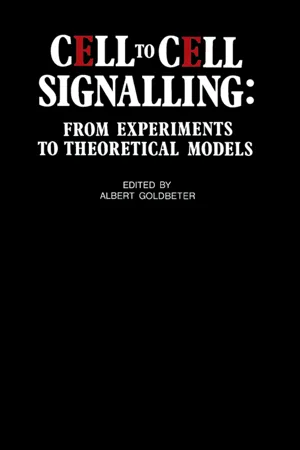
- 466 pages
- English
- ePUB (mobile friendly)
- Available on iOS & Android
About This Book
Cell to Cell Signalling: From Experiments to Theoretical Models is a collection of papers from a NATO Workshop conducted in Belgium in September 1988. The book discusses nerve cells and neural networks involved in signal transfers. The works of Hodgkin and Huxley presents a prototypic combination between experimental and theoretical approaches. The book discusses the coupling process found between secretory cells that modify their behavior. The text also analyzes morphogenesis and development, and then emphasizes the pattern formation found in Drosophila and in the amphibian embryo. The text also cite examples of immunological modeling that is related to the dynamics of immune networks based on idiotypic regulation. One paper analyzes the immune dynamism of HIV infection. The text notes that hormone signaling can be attributed as responsible for intercellular communication. Another paper examines how the dominant follicle in the ovarian cycle is selected, as well as the effectiveness of hormone secretion responsible for encoding the frequency of occurrence of periodic signals. The book also discusses heart signal sources such as cardiac dynamics and the response of periodically excited cardiac cells. The text can prove valuable for practioners in the field of neurology and cardiovascular medicine, and for researchers in molecular biology and molecular chemistry.
Frequently asked questions
Information
The role of the intrinsic electrophysiological properties of central neurones in oscillation and resonance
Publisher Summary
INTRODUCTION
NEURONAL OSCILLATION IN MAMMALIAN CNS
Table of contents
- Cover image
- Title page
- Table of Contents
- Inside Front Cover
- Copyright
- List of contributors
- Preface
- Inside Front Cover
- Part 1: From nerve cells to neural networks
- Part 2: Morphogenesis and development
- Part 3: Cell to cell signals in immunology
- Part 4: Hormonal signalling: The reproductive system
- Part 5: Signal transduction based on calcium oscillations
- Part 6: Intercellular communication in Dictyostelium
- Part 7: Signal propagation in the heart
- Index